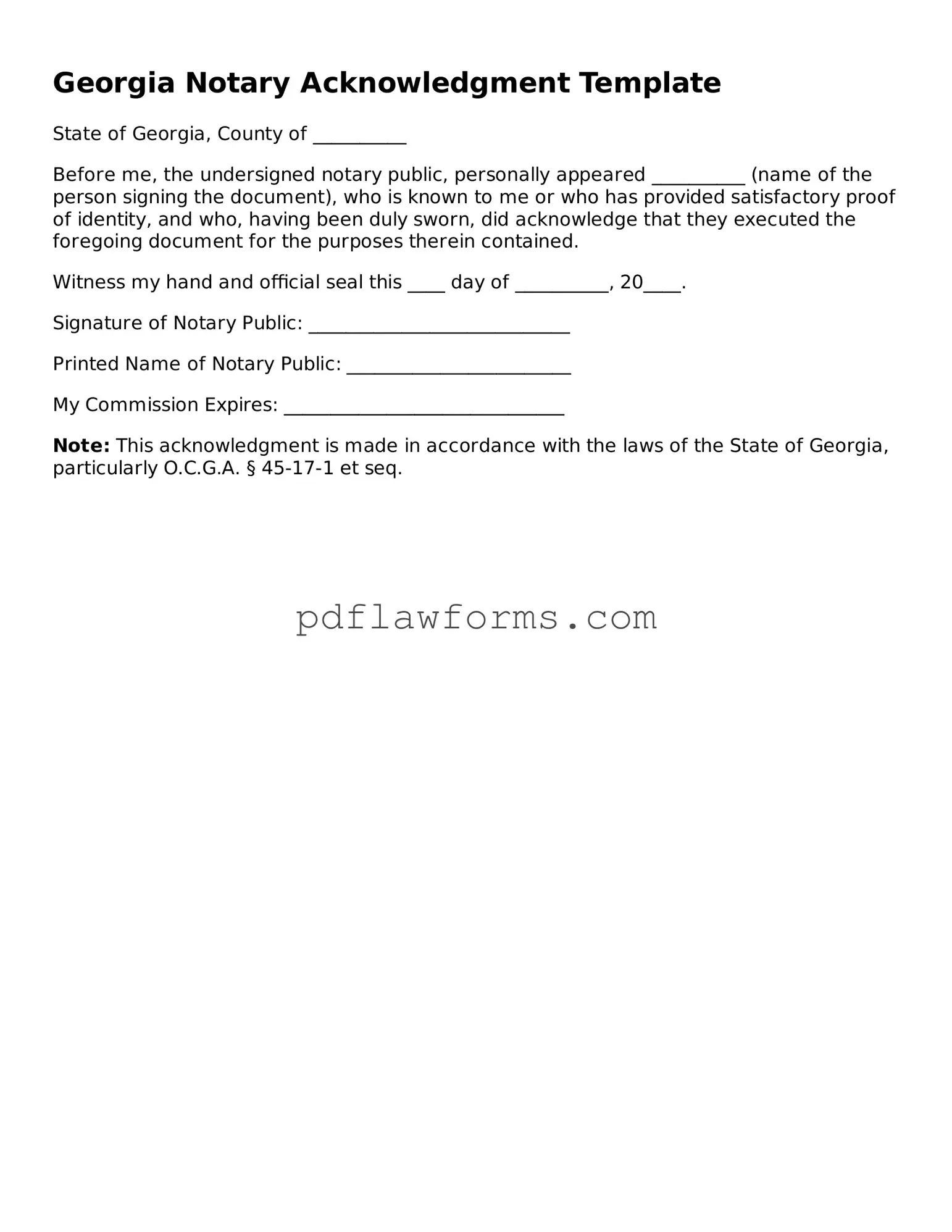Filling out the Georgia Notary Acknowledgment form can seem straightforward, but many people make common mistakes that can lead to delays or even invalidate the document. One frequent error is failing to include the correct date. The date of the acknowledgment is crucial because it indicates when the notary performed their duties. If this date is missing or incorrect, it can create confusion about the validity of the notarization.
Another mistake involves not providing the proper identification for the signer. The notary must verify the identity of the person signing the document. If the signer does not present an acceptable form of ID, the notary cannot proceed with the acknowledgment. It's essential to ensure that the ID is current and clearly shows the signer's name and photograph.
Many individuals also overlook the requirement for the signer to be present during the notarization. Some mistakenly believe that a notarization can occur without the signer being physically present. This is not the case in Georgia. The notary must witness the signing of the document to provide a valid acknowledgment.
In addition, people often forget to check for the correct wording in the acknowledgment section. The language used in the form must meet Georgia's legal standards. Using incorrect or incomplete wording can render the acknowledgment ineffective. It’s always wise to double-check that the phrasing aligns with what is required by state law.
Another common oversight is neglecting to sign the acknowledgment form. While this may seem obvious, it’s a step that can easily be missed in the rush to complete the paperwork. The notary must sign and stamp the document for it to be valid. Without the notary's signature and seal, the acknowledgment is incomplete.
Lastly, some people fail to keep a record of their notarial acts. Notaries in Georgia are required to maintain a journal of their notarial acts, which includes details such as the date, type of document, and the names of the parties involved. Failing to do so can lead to complications if the notarization is ever questioned or challenged.
